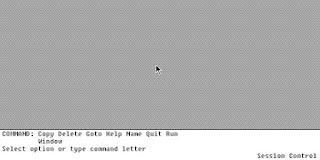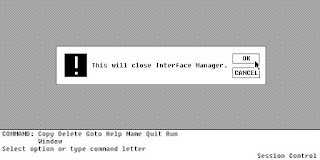Top 15 Upcoming Playstation VR Games of 2018. PSVR was one of the industry's biggest success stories in 2017. With over 2 million PlayStation VR headsets sold and a slew of excellent titles released over the past year, the platform is shaping up to be the essential accompaniment to the PlayStation 4 experience.
1 - Ark Park (PS VR/ HTC Vive)

ARK Park is a virtual reality spin-off on ARK: Survival Evolved. Developed by Snail/Peacock Studio and creatively consulted by Studio Wildcard. Originally set to be released for PlayStation VR in December 2017. It has been postponed and will be released on PSVR together with HTC Vive and Oculus Rift in Spring 2018.
Not much is currently known about ARK: Park. It seems to be about a large theme park full of dinosaurs. There is a mono-rail which brings people to and from the main entrance. The main building is rather similar in appearance to the "Visitor Center" in Jurassic World. There are many paths and bridges, also buggy's which can be driven on paths. The dinosaurs appears to be using the same models as in Vanilla "ARK: Survival Evolved". No creatures from the DLC Scorched Earth, Ragnarok or Aberration are confirmed yet. Only very few mammals seem to make an appearance, like Phiomias, Castoroides, and Mesopithecus. It appears that the visitors/player in the park cannot take damage, as there is a point in the spotlight-video where a girl walks past a Sarco and a Rex and they do not attack her.
2- Alvo (PS VR/Oculus Rift/HTC Vive)

Alvo is an impressive looking new multiplayer tactical VR military shooter featuring CoD-esque game modes playable with cross-platform support for PSVR, Oculus Rift and HTC Vive.
Due for release in 2018, Alvo is an ambitious multiplayer VR shooter that looks set to offer CoD-style thrills in a VR environment. It’s set in the modern day, with a nice selection of high powered military weaponry available and features three different game modes – 5v5 Search and Destroy, Free 4 All and Domination.
Quite how It plans to solve the nausea-inducing problem of first person movement in VR remains to be seen, but it’s a great looking game and the cross platform play is a nice feature.
3 - Blood & Truth (PS VR)

Sony has announced Blood & Truth for PSVR, a new game from The Getaway developer London Studio.
Blood & Truth is set in modern day London "against the city's backdrop of glamour and grit". You play as Ryan Marks, an elite Special Forces soldier on a mission to save his family from a ruthless criminal overlord.
4 - Sprint Vector (PS VR/Oculus Rift/HTC Vive)

Ever wanted to run in virtual reality without smacking into a real wall? You'll have a chance shortly. Survios has revealed that its VR foot racing game Sprint Vector launches February 8th for HTC Vive and Oculus Rift, and the 13th for PlayStation VR. The sci-fi runner stands out with a unique control scheme where you pump your arms to run, and your head to turn. In theory, you can get a feel for what it's like to race at breakneck speed without having to actually, well, sprint.
The title includes both single-player and multiplayer play across 12 tracks, complete with Wipeout-style power-ups and eight players you can customize with skins (including a free Olympics-themed pack). Some of the gameplay will seem familiar, then. VR is definitely the hook -- it just happens to be one helluva hook that fundamentally changes the experience.
5 - Moss (PS VR)

Moss is more than just cute — it’s maybe one of the most artful and thoughtful representations of what virtual reality has to offer.
Developed by Polyarc Games, Moss hovers somewhere in between first and third-person gameplay. The player can control Quill, a tiny but mighty mouse protagonist, and is also able to interact with various objects as an unseen force. Quill is aware of your presence and the two of you work together to explore new areas and solve puzzles to find her family.
6 - Ace Combat 7 (PS4/PS VR/XB1/PC)

Ace Combat 7: Skies Unknown is the 17th entry in the series. Having become renowned for its over-the-top action and melodramatic storytelling, Skies Unknown will also be the first time Ace Combat delves into the realm of virtual reality.
Ace Combat 7’s flight mechanics will feel mostly familiar to those with past experience playing the series, since it maintains similar models for both in-game aircraft and elements of its heads-up display. Controlling your trusty jet should be awesome fun; just try to keep your wits about you.
For the first time ever, clouds will play a substantial role in how you navigate the skies. They can even be used for stealth, concealing you from the enemy as you sneak up behind them. But stay concealed in the clouds for too long and your aircraft might freeze up.
7 - Anamorphine - Tyler's Struggle (PS4/PS VR)

Tyler is finding himself as he hits rock bottom. Discover what happened by journeying through Tyler's memories of his relationship with his wife Elena and her depression. Escape his reality, or face it and figure out how to move on as Tyler's subconscious twists the game in unexpected ways.
8 - Eden Tomorrow (PS VR)

Eden-Tomorrow is a story-driven sci-fi action adventure, a fantastic journey through an unknown world that takes players on an odyssey full of wonders and horrors. Eden-Tomorrow catapults the player right into the heart of a strange cosmos: frightening creatures, cryptic riddles, abandoned places and the ever-present question: “what happened here?”
9 - Star Child (PS VR)

During Sony Interactive Entertainment’s Paris Games Week pre-show stream, we received a new trailer for the upcoming PSVR title Star Child. Playful is the developer of Star Child, and it serves as their second foray into virtual reality with the first being Lucky’s Tale.
10 - Bow to Blood (PS VR)

Bow to Blood is the next title from Tribetoy, where you’ll compete to become champion of The Arena, as its inscrutable overseers test you and your fellow challengers with harrowing high-speed races, deadly battles with swarming assault ships, perilous encounters with aerial beasts, mind-bending challenges, and more. Featuring a diverse set of AI rivals with their own unique motivations and personalities, you’ll need to keep your wits about you to outplay your opponents, forge alliances… or plot betrayals. Procedurally generated encounters and a rotating cast ensure no two experiences will be the same. Armed with powerful cannons, a full complement of crafty unmanned drones, and your trusty pistol for when things get up close and personal, you have what you need to survive – but it will be your skill, your tactics, and how you take command under pressure that will set you apart to become champion of the arena.
11 - Apex Construct (PS VR/Oculus Rift/HTC Vive )

Apex Construct takes one of VR’s more tried and
true mechanics — firing a bow and arrow — and builds an entire game around it.
This isn’t a shooting gallery in which you scale leaderboards, but instead a
full world that you’re going to traverse over several diverse levels with an
engaging story to uncover as you go.
12 - The Inpatient (PS VR)
The Inpatient takes place on the same snow-covered mountain
as Supermassive’s original Until Dawn (2015), just several decades earlier.
Your character is a patient at a dark, creepy sanatorium in which archaic and
painful experiments are just as common as the nightmares that follow. Knowledge
of the successive game isn’t necessary to enjoy The Inpatient, but it certainly
enhances and refines the experience.
13 - Megalith (PS VR)
At its core
Megalith is a competitive multiplayer action game. Players will take control of
large titans that tower over the rest of the levels and give players extreme
powers. Each of the titans will play very differently, such as some being
ranged, some being melee, some a hybrid, and so on. In this way, it’s like a
“hero shooter” such as Overwatch, Quake Champions, or other similar games, but
it has many more nuanced elements as well.
14 - Golem (PS VR)
Golem is a story-based game about an injured child who
learns to explore the abandoned ruins of the Endless City through magical
gifts. She has help from her older sister and father along the way.
For movement, Golem uses what the developers call "Incline
Control". This lets you move as you would naturally by slightly learning
your body as if you were about to take a step and start walking. Highwire said
once you master this Incline Control, you can move effortlessly through the
world.
Meanwhile, there's a cool melee mechanic where every attack and
parry is under the player's direct control. So, if you don't get your sword
above your head in time, you won't block an overhead smash.
15 - The Persistence (PS VR)
A hybrid of survival horror and a rogue like game designed
exclusively for Virtual Reality headgears. Developed by Firesprite, The
Persistence takes players to the year 2521, when the interstellar voyages are a
part of people’s everyday life. The main protagonist is a member of a
spaceship’s crew, which as a result of an unsuccessful experiment, has been
turned into bloodthirsty mutants.
A player is tasked with finding a way to turn
the engines back on allowing him to escape into safer parts of the Universe. In
The Persistence, one observes the action from the first-person perspective.
During the game, a player explores consecutive rooms and cabins of an enormous
ship (the setting of which is procedurally generated), solves numerous
environmental puzzles, and fights the encountered enemies using a diversified
arsenal. There is also an option to sneak past enemies’ backs.
The main
protagonist is equipped with a special device allowing him to recover stem
cells from the bodies of the fallen enemies in order to develop particular
traits and abilities. Interestingly enough, in the game, protagonist’s death is
permanent, which means that each playthrough features different challenges. The
entire experience features high-quality visuals.































